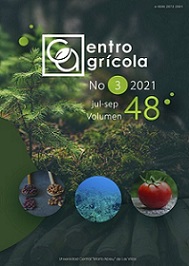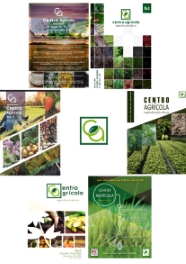CE: 0916 CF: cag014162093
SCIENTIFIC ARTICLE
Insect pests associated with cowpea – sorghum intercropping system by considering the phenological stages
Insectos plagas asociados al cultivo intercalado caupí – sorgo según sus fases fenológicas
Diana González Aguiar1, Ubaldo Álvarez Hernández2, Raciel Lima Orozco3
1 Granja Santa Clara. Santa Clara, Villa Clara, Cuba. CP 50100.
2 Departamento de Agronomía, Facultad de Ciencias Agropecuarias, UCLV. Carretera a Camajuaní km 5 ½. Santa Clara, Villa Clara, Cuba. CP 54830.
3 Centro de Investigaciones Agropecuarias (CIAP), Facultad de Ciencias Agropecuarias, UCLV. Carretera a Camajuaní km 5 ½. Santa Clara, Villa Clara, Cuba. CP 54830.
E-mail: This email address is being protected from spambots. You need JavaScript enabled to view it.; This email address is being protected from spambots. You need JavaScript enabled to view it.; This email address is being protected from spambots. You need JavaScript enabled to view it.
ABSTRACT
The research aims to determine the main insect pest populations and their behavior in the combination cowpea - sorghum. This work took into account the phenology of each crop. The study was conducted on a Cambisol soil from the Basic Unit of Cooperative Production “Día y Noche”, which belongs to the Basic Unit of Cooperative Production “28 de Octubre”, Santa Clara municipality, Villa Clara province, Cuba. The experimental design was a random blocks included four treatments and four repetitions. The first arrangement consisted of two rows of cowpea for each row of sorghum; the second one included three rows of cowpea and one row of sorghum. The other treatments were the monocultures of cowpea and sorghum. The methodology included visual observations of plants with a weekly frequency until crop harvest to detect the presence of the insects. Also, the phenology of each crop was considered. The phytophagous insects quantified in the cowpea crop belong to the families Chrysomelidae, Pyralidae, Cicadellidae, while in the sorghum crop, these insects belong to the families Noctuidae y Aphididae. Finally, the results showed the positive effects of both spatial arrangements with a smaller incidence of insect pest populations.





